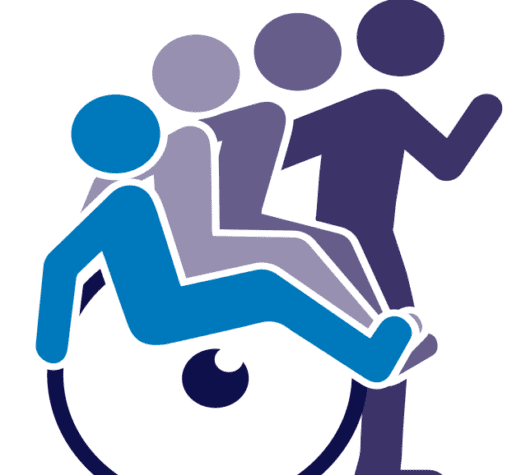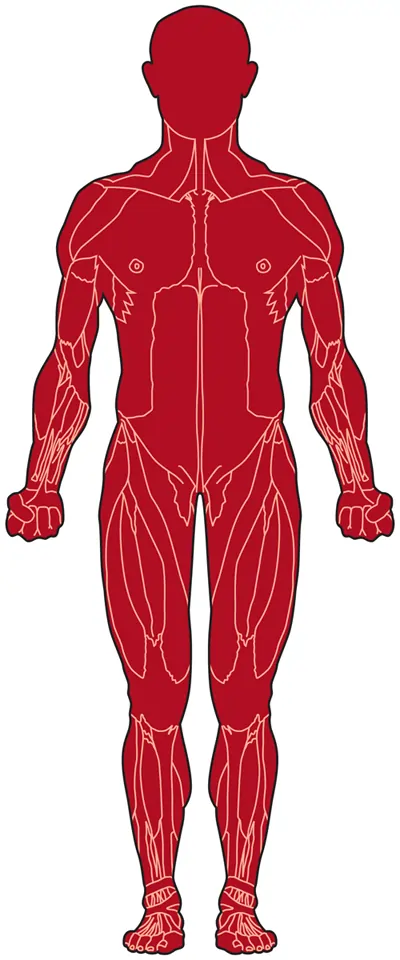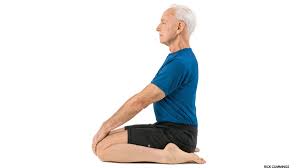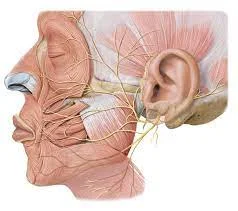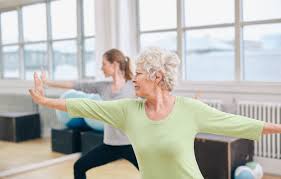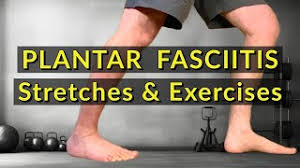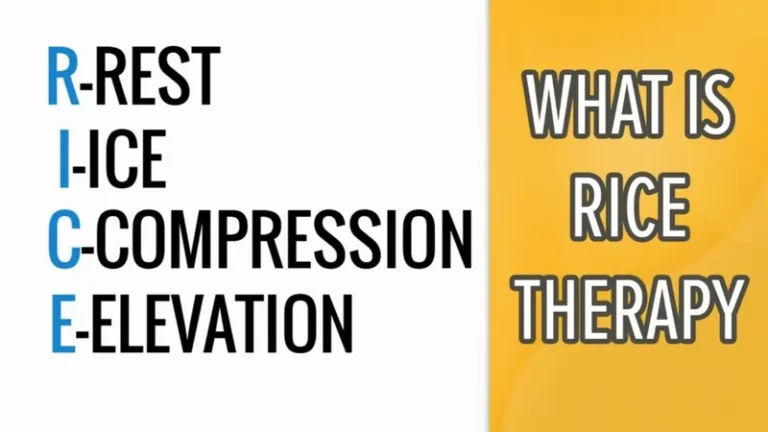9 Beginner Core Strengthening Exercises
Table of Contents
Introduction:
Balance, posture, and general health are all based on having a strong core. Building core strength for beginners involves activating and exercising the deep muscles that support your spine and balance your body, not performing hundreds of crunches.
Core exercises help you move daily, avoid injuries, and perform better during other activities. The nine core strengthening exercises listed below are ideal for anybody just beginning out in fitness since they are easy to perform, efficient, and don’t require any additional equipment.
Benefits of 9 Easy Core Strengthening Exercises:
Engaging in beginner-friendly core exercises has several functional and physical advantages. Among the principal benefits are:
- Improves Posture: By strengthening the core, slouching is lessened and the spine is more aligned.
- Improves Stability and Balance: A robust core helps with daily tasks and guards against imbalances or falls.
- Lowers Injury Risk: Core training protects the body during exercises and movements by stabilizing the pelvis and lower back.
- Supports Daily Activities: Core muscles facilitate easier and more effective daily activities, such as lifting and bending.
- Improves Athletic Performance: A strong core improves overall power and endurance, whether swimming, jogging, or participating in sports.
- Eases Back Pain: By improving spinal support, mild core strengthening eases the pressure on the lower back.
9 Beginner Core Strengthening Exercises Video
9 Beginner Core Strengthening Exercises with Images
Bird Dog exercise:
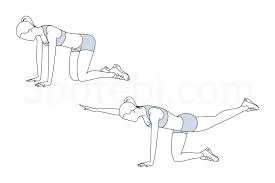
The Bird Dog is a straightforward yet effective core-strengthening exercise that works the glutes, lower back, and abdominals while also enhancing balance and coordination. Starting on all fours, place your knees under your hips and your hands under your shoulders to execute it.
Maintaining a neutral spine and an active core, slowly stretch your right arm forward and your left leg back. This exercise is very beneficial for novices who want to safely develop their core because it not only improves posture overall but also increases spine stability.
Glute Bridge Exercises:
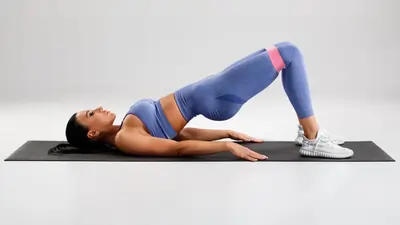
A great workout for beginners, the glute bridge improves hip mobility while strengthening the lower back, glutes, and core. To do it, place your feet level on the floor, hip-width apart, and lie flat on your back with your knees bent. With your palms facing down, place your arms by your sides.
Lift your hips toward the sky by using your core and pushing through your heels until your body is in a straight line from your shoulders to your knees. Hold for a moment at the peak, then gently descend again. In addition to strengthening the glutes, this exercise promotes improved posture and lessens lower back pain.
Seated Knee Tucks:
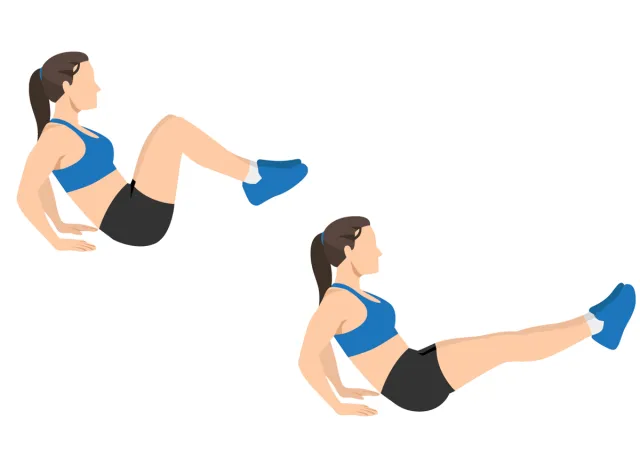
A basic yet powerful core exercise that works the lower back, hip flexors, and abdominals is the seated knee tuck. To execute them, place your hands slightly behind you for support while sitting on the floor or the edge of a chair.
Bring your knees closer to your chest, raise your feet off the floor, and lean back a little. Pull your legs back in after slowly extending them out without touching the ground. Control the movement and repeat it. This exercise is excellent for beginners since it strengthens the lower abs, enhances balance, and increases core endurance.
Crunches:
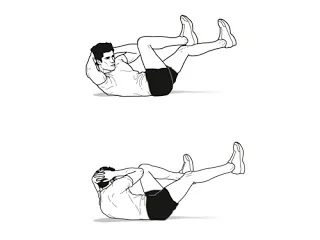
One of the most well-liked and accessible core exercises for beginners, crunches mainly work the muscles of the abdomen. To perform them, place your feet hip-width apart on the floor and lie flat on your back with your knees bent. Without putting any pressure on your neck, place your hands lightly behind your head.
Maintaining your lower back pressed against the floor, raise your head, neck, and shoulders a little off the ground by using your core. Lower yourself back down slowly and repeat. Crunches are an excellent way to start strengthening the midsection since they help tone the abs, increase core endurance, and enhance overall stability.
Plank:
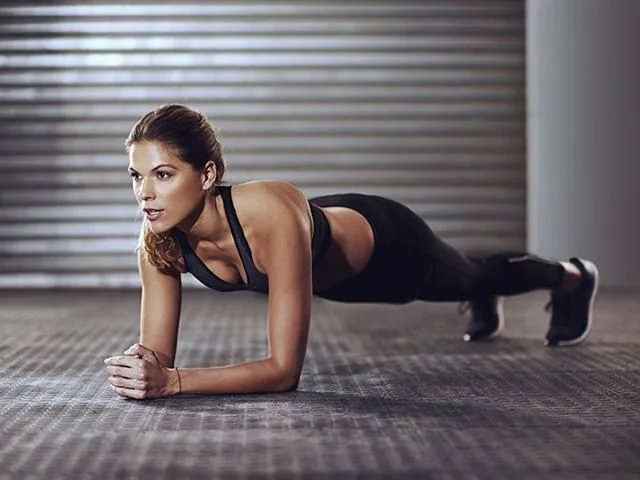
An excellent isometric exercise that works the entire core as well as the shoulders, arms, and glutes is the plank. Start by placing your elbows precisely behind your shoulders and your forearms on the floor in a push-up stance. From head to heels, maintain a straight body alignment by using your core and preventing hip lift or sagging. As long as you can, while keeping proper form, hold this stance. Planks are among the greatest core workouts for beginners since they not only build the abdominals but also enhance posture, stability, and general endurance.
Side Plank:
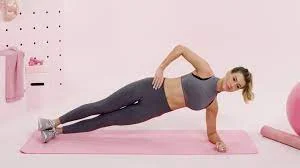
An exercise that especially targets the obliques, as well as the shoulders, hips, and glutes, is the Side Plank. To do it, stretch your legs and stack them on top of one another while lying on your side. Lift your hips so your body is in a straight line from head to feet, then place your forearm on the ground just beneath your shoulder.
Hold the pose while maintaining an engaged core, then switch sides. This exercise is a great addition to a beginner’s core training regimen since it strengthens the waist, promotes improved posture, and helps with lateral stability.
Russian Twist:
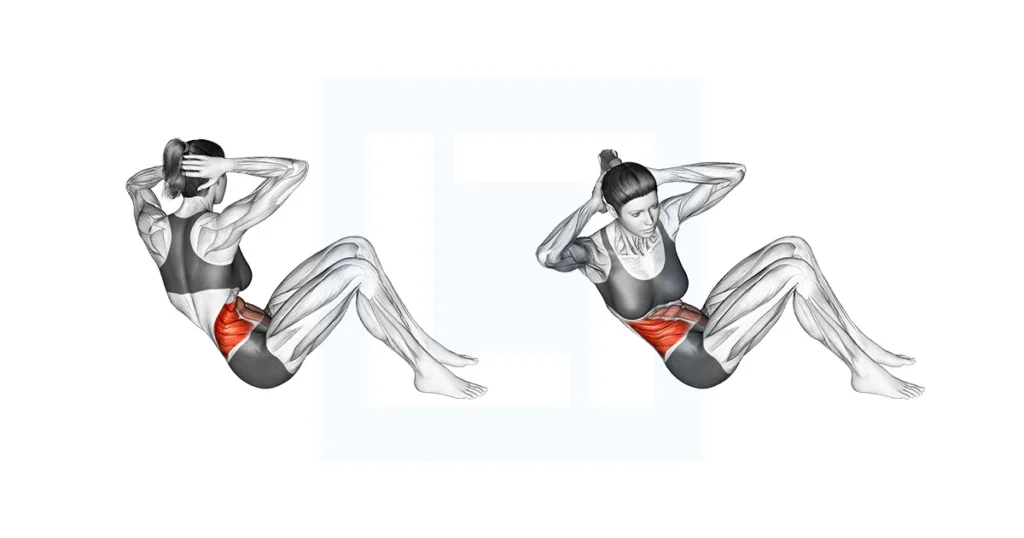
A dynamic core exercise that improves rotational stability and tones the obliques, abdominals, and hip flexors is the Russian Twist. Sit on the floor with your feet flat and your knees bent to perform it. If at all possible, raise your feet a few inches off the floor after bending back slightly to activate your core.
Holding your hands together, twist your body to one side, bringing your hands to the floor. Then, in a controlled motion, spin to the opposite side. Keep switching sides. This exercise is excellent for beginners since it improves balance and coordination in addition to strengthening the belly.
Superman exercise:
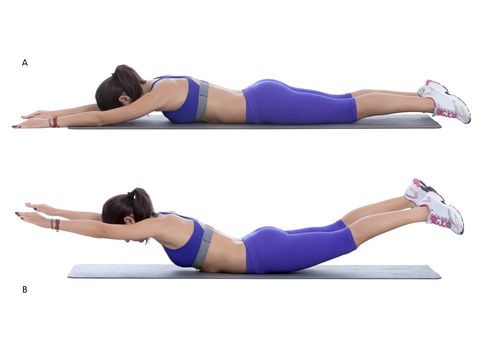
Targeting the lower back, glutes, and shoulders, the Superman exercise improves spinal stability while strengthening the core and back in a gentle yet efficient manner. It is performed by lying face down on the floor with your legs completely spread out and your arms straight out in front of you.
As though you were Superman, slowly raise your arms, torso, and knees off the ground while using your core. After a few seconds of holding the posture, carefully lower yourself back down. This exercise balances out abdominal training for general core health, strengthens the back, and promotes proper posture.
Standing Side Bends:
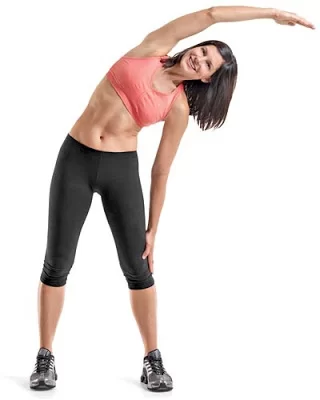
Standing Side Bends are a quick and easy core workout that works the oblique muscles, as well as the hips and abdominals. Place your hands on your hips or, for more resistance, carry a small weight in one hand while standing tall with your feet shoulder-width apart.
Return to the beginning position after slowly bending your body to one side as far as is comfortable while maintaining a straight back and an engaged core. Continue on the opposite side. This exercise is a great option for beginners since it strengthens the waist, increases general stability, and improves spine flexibility.
Conclusion:
Building a strong foundation of stability, strength, and balance may be achieved safely and effectively by including these nine beginner core strengthening exercises in your regimen.
Simple exercises like crunches and glute bridges, as well as stabilizing ones like planks and bird dogs, all focus on different areas of the core to strengthen the lower back, improve posture, and increase general fitness.
The best thing is that they are ideal for beginners because they can be done anywhere and require little to no equipment. In addition to toning your stomach, these exercises can help you move more freely in everyday life and during other workouts.
FAQs
Exercises that work the core muscles include swimming, cycling, basketball, tennis, and rowing. Running is another workout that requires a strong core. For improved control and form, runners require a strong core to support their torsos.
Plank. A full-body workout that works your core is the plank. Additionally, it tones your legs, glutes, shoulders, back, and arms. With your knees behind your hips and your hands beneath your shoulders, begin on all fours.
4–8 weeks
How much time does it take to build core strength? Within four to eight weeks, you should be able to strengthen and develop your core muscles if you maintain consistency and train your core two to three times each week.
Even though ten minutes might not seem like much, the core muscles still require recovery time in between exercises. Overtraining them may result in pain or muscle imbalances. I would suggest working out your core no more than once every two days.
Pulling your belly button gently toward your spine can help you actively exercise your core muscles throughout the day. Be careful not to tense them too much, and concentrate on diaphragmatic breathing, which causes your belly to expand with inhalations and contract slightly with exhalations. This may be done while standing, sitting, or walking. To improve general stability, combine it with core-strengthening exercises like yoga or pilates. Make sure to alternate between contraction and relaxation to prevent fatigue and increase muscular responsiveness.
Seniors need to maintain core strength even more since it’s important for maintaining proper posture, avoiding accidents, and making sure their muscles can sustain daily tasks for as long as possible.
Agile strength, strength endurance, explosive strength, maximum strength, relative strength, speed strength, and starting strength are the seven categories of physical strength. With uses in sports and daily life, such as the capacity to lift big things (Maximum Strength) or move swiftly (Speed Strength), these strength categories each reflect distinct ways in which a person’s muscles may generate force.
Walking for 60 minutes three times a week, beginning at 6 a.m. or 6 p.m., is encouraged by the 6-6-6 walking challenge. Walking for six minutes each to warm up and cool down is part of the workout. Even though walking is recommended by professionals, some people may find it challenging to follow the strict fitness regimen.
Walking does build your core since it makes your back, abdominal, and stabilizing muscles work harder to keep your posture and balance. Using these muscles makes daily tasks simpler and supports your spine by increasing core strength, stability, and endurance. Try walking on an elevation or on uneven terrain to put your core muscles under greater strain for a more strenuous exercise.
It puts the body in a fat-burning phase in addition to burning calories. Planks may dramatically decrease belly fat with regular use and good form, giving you a slimmer appearance quickly!
Generally speaking, two to four sessions per week for four to eight weeks should be included in core training programs. Common core workouts include plank, crunch, and trunk twist variations.
The V-sit is a difficult yet efficient advanced core exercise that targets the internal, external, and rectus abdominis muscles. The hip flexors are also worked during this workout. The V-sit is performed by sitting on a mat, contracting your core, and raising your legs to a 45-degree angle, as seen in the photo.
A balanced fitness regimen consisting of three days of strength training, three days of cardio, and three days of rest or active recovery is sometimes referred to as the “3-3-3 gym rule.” Although it isn’t a rigorous scientific rule, novices use it to assist in planning a weekly exercise program that is balanced, sustainable, and prevents overtraining.
The plank is the ultimate core workout! How to do it: push up on your elbows after starting from the floor. Keep your elbows above your shoulders and your legs straight.
Once you’ve developed your tolerance for the exercises, you may do a toning-type core regimen four to six days a week. However, if you have excessive soreness, you might need to take a 48-hour break to give your muscles time to recuperate. Even if you never get sore, make sure you take at least one day off per week.
The Dead Bug, Bird Dog, Plank (including side plank and modified plank), Bicycle Crunch, Bridge, and Pallof Press are all good exercises for strengthening the core. These exercises may be advanced from beginner to expert levels and target various core muscles, such as the rectus abdominis, obliques, and transverse abdominis.
Core strengthening is a sort of exercise that works the muscles surrounding your trunk, including those in your belly, back, hips, and pelvis, to improve balance, stability, and posture. By training these muscles to work together, you may increase your ability to execute daily tasks, reduce the pressure on your spine, and prevent accidents—all of which will enhance your overall physical function and performance.
To enhance balance, stability, and posture, core strengthening is a type of exercise that targets the muscles surrounding your trunk, such as those in your belly, back, hips, and pelvis. You may improve your capacity to carry out daily duties, lessen the strain on your spine, and avoid accidents by training these muscles to cooperate, which will ultimately improve your total physical function and performance.
References:
- Nunez, K. (2024, April 24). The best core exercises for all fitness levels. Healthline. https://www.healthline.com/health/best-core-exercises
- Cscs, J. R. (2025b, February 26). 9 Exercises to Strengthen your core and support Pain-Free Movement. Health. https://www.health.com/core-strengthening-exercises-8770097
- Ms E. Q. (2024, May 1). 20-Minute Core Workout. Verywell Fit. https://www.verywellfit.com/quick-core-workout-routine-3120075
- Tonal. (2022, August 17). 9 best core exercises you can do at home. https://tonal.com/blogs/all/best-core-exercises?srsltid=AfmBOoom960YMobJ-2lMNKrMGGEnr_LC2ZMq4blFnx1zcLg8koldm8Jh
- Longley, B. (2025, May 23). 10 awesome exercises for building a killer core. Red Bull. https://www.redbull.com/in-en/best-core-exercises-for-beginners-workout
- Romine, S. (2024, March 6). 9 of the Best Core Exercises for Beginners. BODi. https://www.bodi.com/blog/core-exercises-for-beginners?srsltid=AfmBOopoaK51tE1GyA56-ncEFu_m4QJEBfBVFg-RLzO9Kf6nA_EhW2q6
